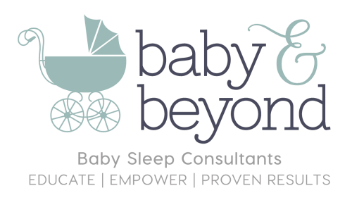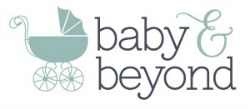Back to Basics – Sleep

Article by Kathryn Griffin, Baby and Beyond Sleep Consultant
It seems the art of parenting is forever changing. Managing a family can be overwhelming and exhausting and that’s when you’re having a good day! Keeping it simple commands an understanding of WHY we need to do what we do when we are doing it.
Below is a sample of six simple solutions to support sleep:
1. Supporting your baby’s sleep – sleep associations to put in place to prevent wake ups
Half of a baby’s sleep is light sleep, this is the time where a baby can easily wake. Try:
- Swaddling
- White noise
- A darkroom (not able to read a book in it)
- Space to self sooth
All these can help to link the sleep cycles.
2. Nap Changes.
At around the 4 month mark you may find you need to change things up a bit when it comes to naps.
- Your baby’s sleep is best when stationary for at least one nap a day but preferably two.
- A good nap is about 1.5 hours long.
- Short naps mean they are struggling to link sleep cycles or fall into a deep sleep.
3. The Power of a Sleep Window.
A nap is often easier to achieve when attempted on a regular basis at specific times. A ‘sleep window’ is the open window of time your body will allow you to fall asleep, if you stick to the sleep window it will give you a greater chance of achieving naps.
A biological sleep window occurs when there is a perfect balance between the circadian rhythm and the homeostatic sleep drive – both powerful forces acting on the body.
When these forces act together, they create time-periods during the day (naps) and night (bedtime) when sleep is at an optimum and baby will experience the most restorative sleep.
4. Speaking of Biological Clocks….
Help support your baby’s natural development by:
- Letting sunlight into the room in the morning and getting the first feed of the day in the light.
- Dimming lights in the evening. This encourages the onset of melatonin.
- Setting up rituals, patterns and having good sleep hygiene
- Offering feeds frequently throughout the day.
5. Sleeping through the night…..open to interpretation ️
For some this can mean 6 hours of uninterrupted sleep for others it can mean 10 to 12 hours.
- As the parent, determine what a healthy night sleep would look like for your family.
- It is vital that baby is a healthy weight in keeping with their growth.
- Look at your entire day, disruption during the day can affect the night sleep.
- Keeping consistent with sleep times and other daily rituals, will allow a routine to develop that can make for an uninterrupted night sleep to happen naturally over time.
6. Naps….Supply and Demand.
Sometimes we can be a little too quick to drop naps. Knowing the amount of sleep our baby’s need at the age they are at can help us decide how best to run our day
From:
- 4-6 months is about the right time to drop from 4 to 3 naps.
- 7-9 months can look to move from 3 to 2 naps.
- 14-18 months drop down to one nap.
The team at Baby & Beyond understand that no two babies are the same and quite often this is the case even within the same family.
Our favorite part of the experience is visiting families in their homes, finding solutions that work with them and celebrating their successes.
With a focus on empowering, educating and guiding families experiencing sleep issues and parenting challenges, Baby & Beyond provide solutions from sleep, settling, starting solids, toddler behavior and everything in between.
Complied by Kathryn Griffin


